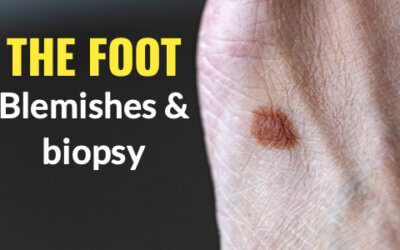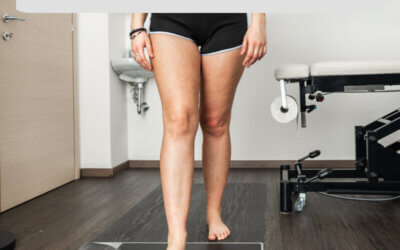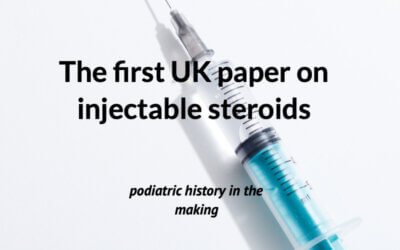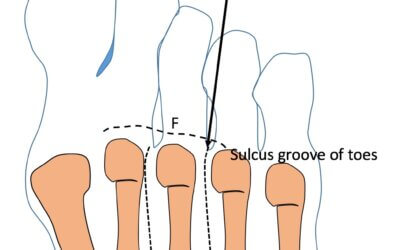More about heel problems
The most common types of heel pain problems arise from general overuse or repetitive heel pad strain but heel pain is complex and if left can resist treatment. In this article, there are four key subjects that you need to know about. The first relates to children while the other conditions are adult related. There are conditions such as rheumatoid arthritis, gout and ankylosing spondylitis that may affect the heel as well as rarer conditions and of course fractures. If the pain does not subside with self-help remedies recommended after several weeks, then seek professional medical help from a podiatrist or medical practitioner.
Biopsy in the foot
There are several techniques available to the surgeon. We can shave the top to acquire a sample or we can punch a section out using a small punch. The last technique is excisional biopsy, often used as part of treatment. Shave, punch and excisional biopsy are the different techniques. Biopsy is designed as a diagnostic method of test for abnormal skin cells.
Biomechanics and the foot orthosis
In the USA, from the sixties, the earlier designs were based around a popular subject called ‘biomechanics’. This was a pseudo term but became a significant part of the podiatric medicine degree course in the USA. Much of this pseudo-science involved measurements with protractors (tractographs) and in build error ‘eyesight’ assessment which led to assumptions with a predilection for the concept of wedging. The foot orthosis (F.O.), as it was called, tried to separate itself from the older insole and appliance. A google search today will still confuse the terms.
First use of corticosteroids by UK podiatrists
There has been no previous podiatric publication regarding the use of local corticosteroids in the UK; indeed, in the USA podiatric literature studies have often been conducted empirically by retrospective analysis. It was decided to look at the range of foot pathology routinely treated with local corticosteroids to establish the clinical effectiveness of two preparations. Local glucocorticoid action is a common method used to treat inflammatory pain and one that is well recognized in clinical practice the world over.
Promoting Foot Health as Podiatry
Working with podiatrists and others promotion of foot health can be better signalled under podiatry. ConsultingFootPain (CFP) publishes and creates an open access body of material to highlight podiatry. The most important driver is to emphasise that podiatry is not just about feet but general health.
Will a Roadmap to Practice Reboot Podiatry?
Elevating a profession’s scope is something all health care practitioners should aim for. Medicine relegated nail surgery to podiatrists after years of rebalancing responsibilities and skills. As time progressed, the gaps in primary care and that of the traditional first contact, the G.P. medical doctor, has reached a point where medicine is no longer the only method of acquiring assistance for a patient. That gap in medicine has been created because of poor productivity, failed recruitment, early retirement, financial inducements, and the population’s growing needs
Emergency in a podiatry setting
Alison’s detailed description provides an accurate timeline with considered actions and thoughts before, during, and after. It covers what we see as an anaphylactic emergency – that slow progressive change then wham-bam! In publishing this scenario, I dug out a case from 1999 that, at the time, I did nothing – maybe I was too embarrassed to admit my event, doubtless because, at the time, the drugs I had access to office were not the norm for podiatrists. We should all follow Alison’s approach to many such events which offer objective reflection.
A Writing Guide
Writing may not be your thing but the process is a great way to reflect on all manner of aspects of clinical practice and health benefits. CFP is NOT encouraging you to write scientific papers. Please reserve those for specific journals. IF for some reason you are rejected, then do try CFP and we can talk about the paper. CFP tries to be non-restrictive and wishes to help new authors. Of course experienced authors are welcome.
Incisional Surgery for Morton’s Neuroma
There are four principle approaches to gain access to plantar digital neuroma (PDN) and have been described by those who first wrote up the technique. Hoadley (1893) entered the intermetatarsal space from the sole, while McElvenny (1943) split the webspace. Nissen (1948) used a transverse cut on the sole instead of the longitudinal access of Hoadley, and McKeever (1952) accessed the space from the dorsum.
Thermal choices for Morton’s Neuroma?
Thermal choices are now available albeit in some short supply of long term evidence. So we must ask ourselves. Is surgery successful and should I know more about what to expect? In addition which surgery is best – if there is such a thing? And, is there an alternative to surgery? It is in this area we need to explore the other possibilities.









